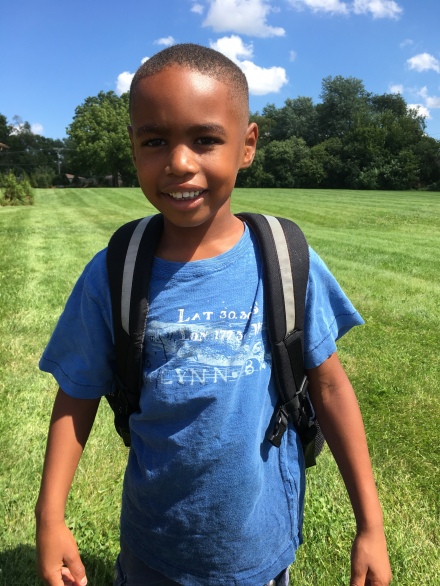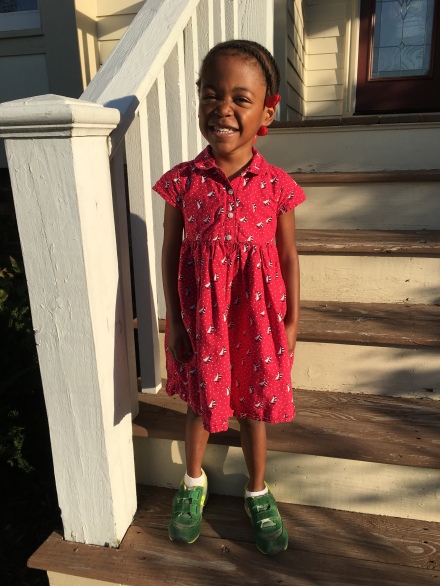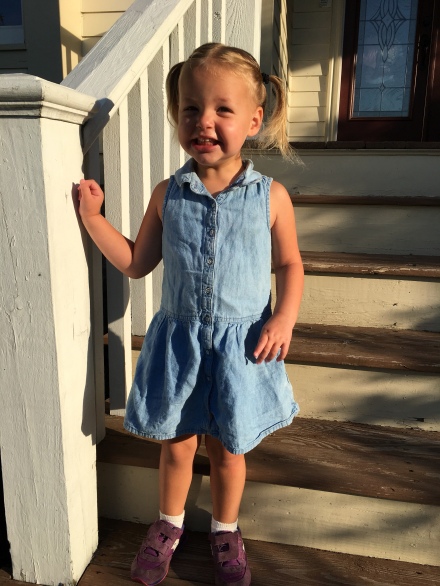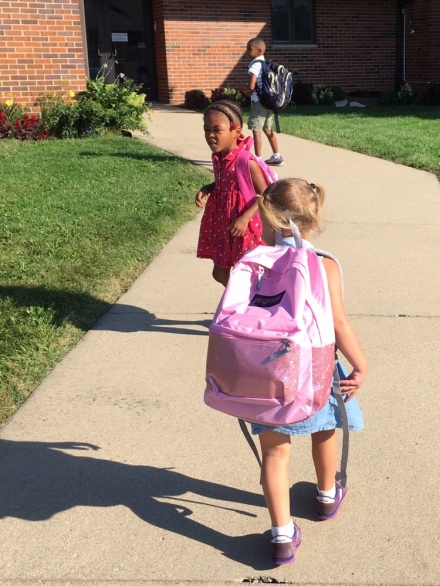

After sending Annie off to kindergarten two weeks ago and getting back to homeschool work last week we had our last first day of school this fall earlier this week. Jack, Jenny, and Josie headed off to a Charlotte Mason cottage school. Their classes meet once a week. Jack’s class has a full range of subjects, while the little two have a low-key preschool class with lots of play, stories, and time in nature. Afterwards everyone gathers for lunch and recess. There’s no homework but they do send home the schedule and suggested readings (modified from the Alveary curriculum) so that you can build a full Charlotte Mason home curriculum around the program if you like. I was impressed with the books, the teachers, and the kids, and appreciated how orderly and timely everything was – not always the case when homeschoolers gather!

We were also pleasantly surprised by the school’s diversity. When I was growing up most local homeschool groups were 98% white (actually, those were the diverse ones 😉). This tiny school has a significant proportion of African American and Hispanic students as well as an African American teacher. In addition, this school is doing a good job of modifying the set curriculum to offer a more diverse and global perspective versus a narrowly white perspective. While we appreciate the benefits of homeschooling, classical education, and Charlotte Mason, many classically-oriented curriculums focus almost 100% on white authors and individuals, particularly those curriculums that insist on only using books Miss Mason would have used. When they do give a nod to diversity it’s only in connection to slavery or the Civil Rights era. What a loss! What kind of “feast” are we spreading for our kids when we only ever serve “food” from one place or category? I think it’s possible (critical, really) to embrace the richness of European cultural heritage while ALSO embracing the richness the rest of the world has to offer. Likewise, it’s important to teach our kids that not only white Europeans or North Americans (or Australians, or colonizers, or what have you) have contributed to their countries.

For example, two commonly recommended books for lower elementary students in Charlotte Mason curriculums are Fifty Famous Stories Retold by James Baldwin and Stories of Great Americans for Little Americans by Edward Eggleston. To be honest, I’m not sure I would’ve thought twice about them before adopting African American kids. They’re similar to curriculum books from my childhood. The stories are well told and offer rich ideas for young children. As books, there’s nothing especially wrong with them at first glance. I’m all for reading classics, while occasionally verbally editing the author’s tone or antiquated viewpoints for my kids. Even now, I’ll happily read most of those stories to my children. However, used in isolation or read only with like books, they offer a painfully narrow view of the world. Out of fifty stories, only two specifically referred to non-European characters (Genghis Khan and a “lazy king of the East”, while two more were not specific to any nation). Likewise in Stories of Great Americans for Little Americans mention is made of Native Americans but every hero is white (and almost every hero is male, but that’s another issue…). When we think we’re teaching history, we’re also teaching viewpoints. In this case, that only white Americans have been “great Americans.” Used exclusively such books build a myopic view of history and the world. At worst, they implicitly teach white supremacy and racism, quite often without parents’ awareness. I grew up with similar books and until embarrassingly late I thought we didn’t learn about, for example, Africa or Southeast Asia because nothing important had happened there. I thought that everything that “mattered” had occurred in the Middle East or Europe (plus gunpowder and paper from China) because that’s all my books discussed. I want my kids, black and white, to grow up with classic stories of Washington or Audubon or King Arthur or Socrates. I ALSO want them to grow up with stories of wise and heroic kings and queens from Africa and know Mexican folktales and the history of India. I want them to know about the history of European settlers in our area. I ALSO want them to know about the Native American who had cities and villages here for hundreds of years before the Europeans arrived. All that to say, in a roundabout way, that I’m happy this school is embracing western classics while giving the kids a wider viewpoint. We’ll continue to work on the same goals at home.
As someone who experienced both the rich benefits and the pitfalls of homeschooling myself I’d encourage you (homeschooler or not) to inventory your own bookshelves and your children’s bookshelves. What kind of faces are reflected in their books? What usually comes home from the library? Is one group usually the main character and another always relegated to sidekick? Which heroes are your children learning about on a daily basis? Once in a while? Not at all? What perspectives, explicit or implicit, will our children take in about themselves, other citizens of our countries, or other people around the world from the books around them?






















